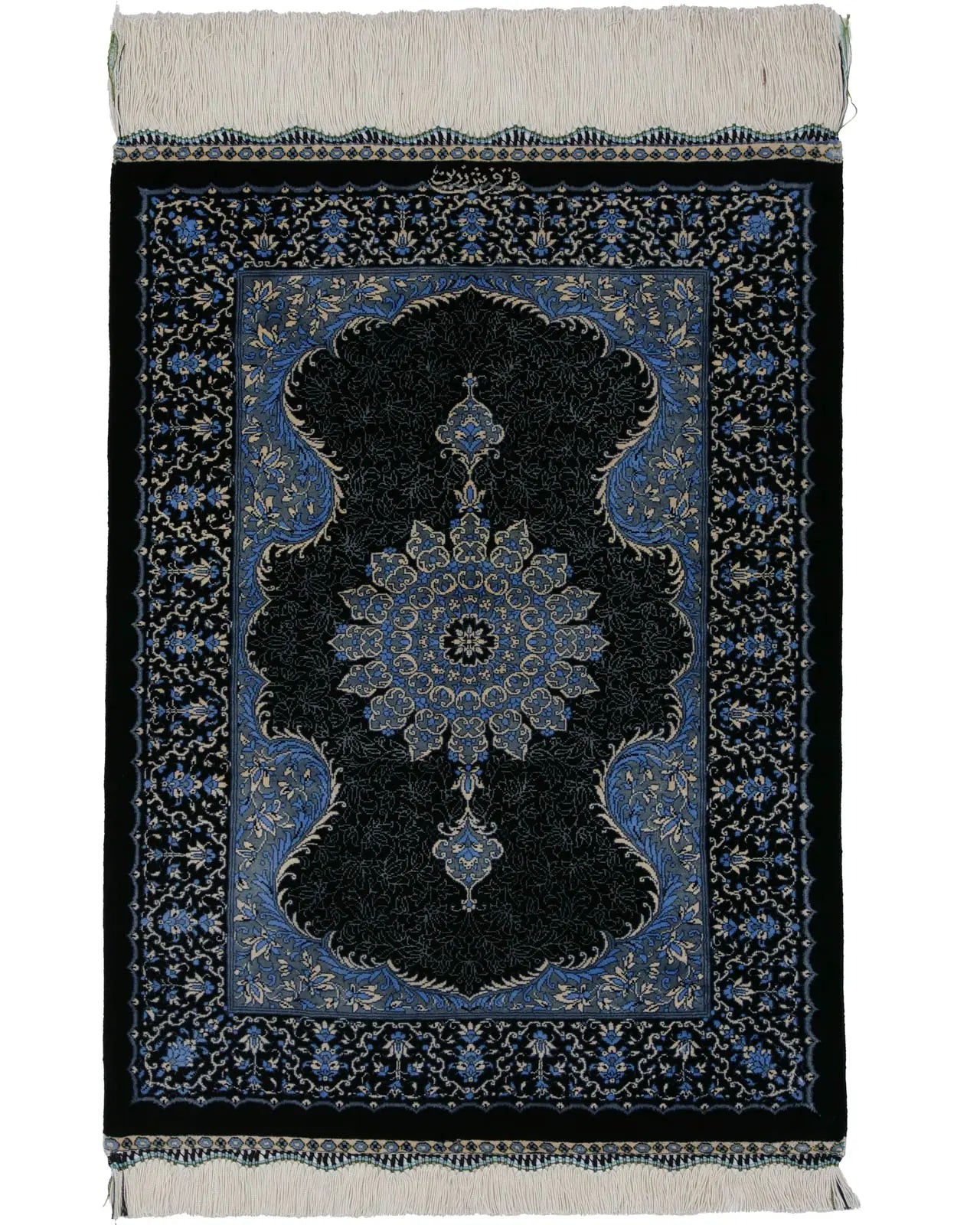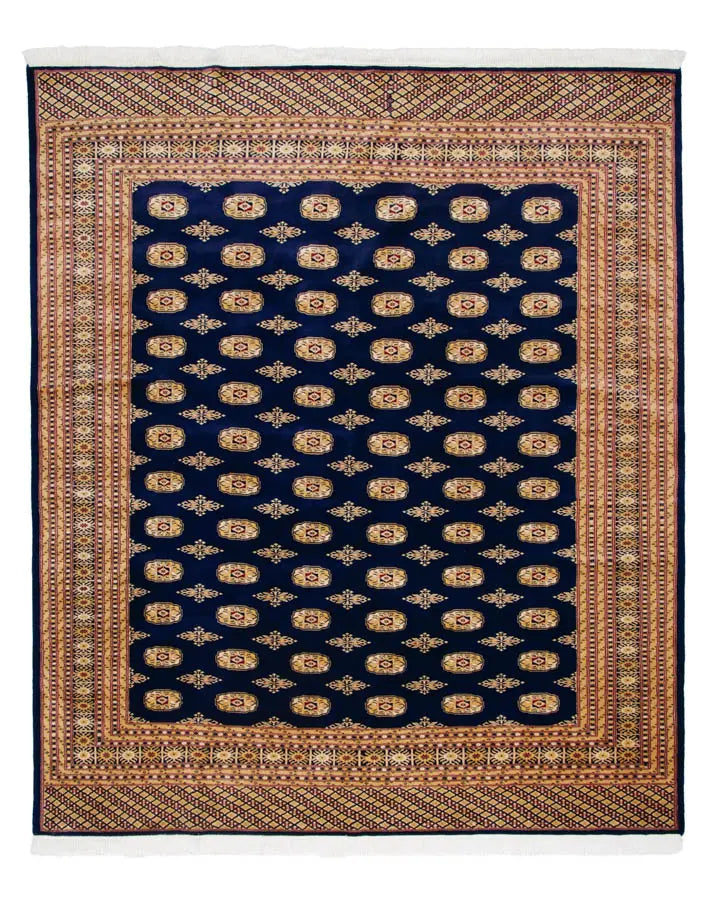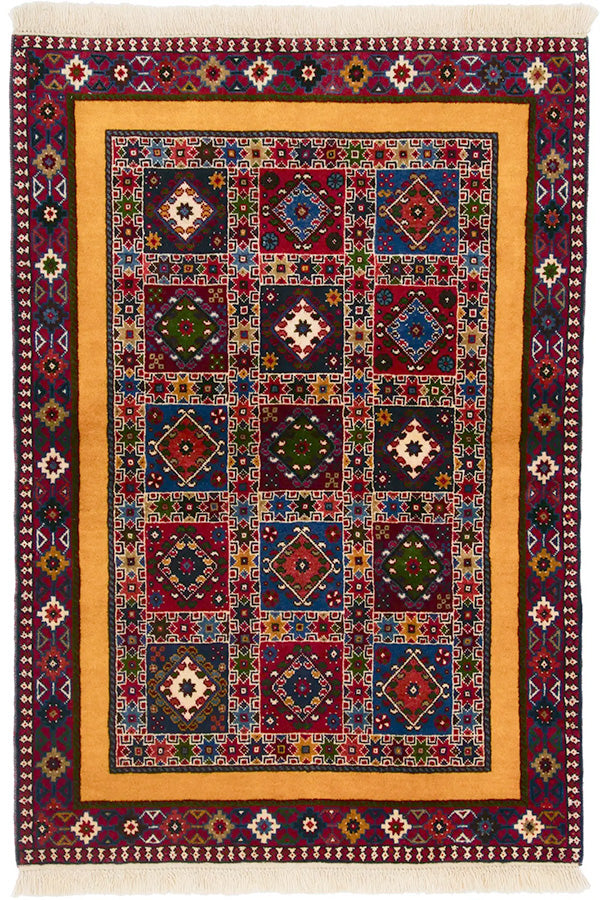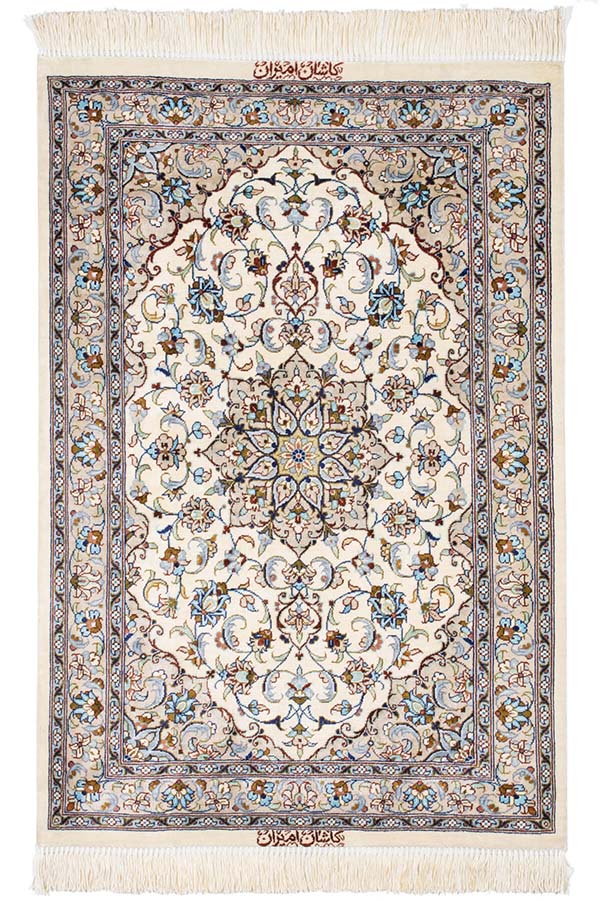Kilim is a Turkish word that refers to a low-pile rug that is widely produced in Turkey, North Africa, the Balkans, the Caucasus, Iran, Afghanistan, Pakistan, Central Asia and parts of China.
The main difference between kilims and pile rugs is that kilims have no pile and are designed by interweaving colourful weft and warp threads.
Kilims are generally made using the slit weave technique, where the weft threads of different colours leave slits (gaps) between adjacent blocks. Weavers pack the weft threads tightly to cover the warp threads and favour diagonal patterns, which often result in geometric or floral designs.
Kilims are widely used not only as floor coverings but also as wall hangings, furniture coverings, bags and cushion covers.
The main material is usually wool, which is flexible and durable, but cotton and animal hair (goat, camel, horse) are also used. Silk is a rare luxury material, but is produced in some areas.
The making of a Kilim involves the use of a loom, a comb, a shuttle, a knife and scissors, etc. These tools are used to weave traditional motifs and symbols into the fabric.
A special feature of kilims is that the design is the same on both sides, so they can be used on either side.
This site has limited support for your browser. We recommend switching to Edge, Chrome, Safari, or Firefox.
Free shipping on orders over ¥10,000!
Search
Popular searches
Search
Popular searches
cart
0
Sorry, looks like we don't have enough of this product.
Products
Pair with
Your Cart is Empty




